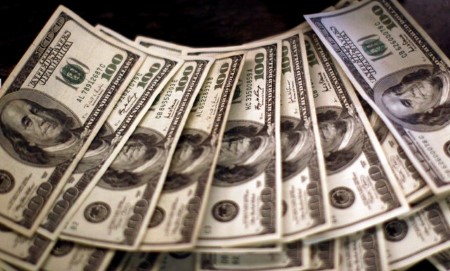




Philippines Trade Update: Trade trajectories trend along
 DOWNLOAD
DOWNLOAD

Policy Rate Updates: Double cut finale
 DOWNLOAD
DOWNLOAD

Monthly Economic Update: One for the road
 DOWNLOAD
DOWNLOAD


Yields move sideways as investors prepare for supply deluge

NEW YORK – US Treasury yields were mixed in quiet trade on Monday as investors digested Friday’s data showing moderating job creation last month, which validated the Federal Reserve’s suggestion that the economy was not so overheated that it held off cutting interest rates this year.
This week’s calendar looks much lighter than last week’s, which included the Treasury’s refunding plans, the Fed’s policy announcement keeping interest rates on hold, and Friday’s report of a smallish 175,000-job April nonfarm payroll rise that sent the yield on the two-year note skidding to a three-week low and the 10-year yield to a two-week low.
With the Consumer Price Index release more than a week away, attention will turn to Treasury auctions and how a parade of Fed speakers spin last week’s decision to hold rates steady while all but committing to ease in 2024, and almost ruling out a hike, even as the economy looks robust and inflation sticky.
The 2-year yield nudged up and the 10-year slipped in early afternoon trade after Richmond Fed President Thomas Barkin said getting inflation under control is a “stubborn road,” and the Fed will need to get demand down to finish the inflation fight.
Those comments came after New York Fed President John Williams told the Milken Global Conference that the Fed will eventually cut interest rates, which did not move the needle much either.
“I don’t think either Barkin or Williams said anything we haven’t heard before,” said Subadra Rajappa, head of US rates strategy and Societe Generale in New York. “I think for the most part the focus is going to be on how the market takes on the supply and how much of a concession we build.”
The yield on benchmark US 10-year notes was off 1.1 basis points from its late Friday level at 4.489%. It bottomed at 4.453% after Friday’s jobs report, the lowest yield since April 10.
The 2-year note yield, which typically moves in step with interest rate expectations, rose 2 basis points to 4.8264%. On Friday it fell to 4.716%, the lowest since April 5.
With last week’s fall in yields, it’s an open question how much demand will show up when the Treasury auctions USD 58 billion in 3-year notes on Tuesday, USD 42 billion in 10-years on Wednesday, and USD 25 billion of 30-year bonds on Thursday.
“The macro influences aren’t going to be quite as pronounced this week, but we’re back into supply,” said Jack McIntyre, portfolio manager, global bonds, at Brandywine Global. “Now the market is going to have to deal with this never-ending onslaught of Treasury supply.”
The April read on producer prices is due on May 14, followed by widely watched CPI for April on May 15. Both will be indicators of whether inflation has begun to come down again toward the Fed’s 2% target rate.
In the Fed funds futures market, traders are currently pricing in a 66% chance the Fed will pivot in September with a 25 basis point cut at that meeting. The second cut is priced for December.
The 30-year bond yield fell 1.8 basis points to 4.643% from 4.661%.
The yield-curve spread between yields on two- and 10-year Treasury notes US2US10=RR, seen as an indicator of economic expectations, was at a negative 33.9 basis points, more inverted than -32.35 late on Friday.
(Reporting by Alden Bentley; editing by Jonathan Oatis)
This article originally appeared on reuters.com





 By Reuters
By Reuters